Yoga for Newbies: Essential Poses to Master
Chosen theme: Yoga for Newbies: Essential Poses to Master. Begin your journey with clear guidance, friendly cues, and practical tips that make first steps feel safe and exciting. Comment with your goals and subscribe for weekly beginner-focused pose breakdowns and gentle practice plans.
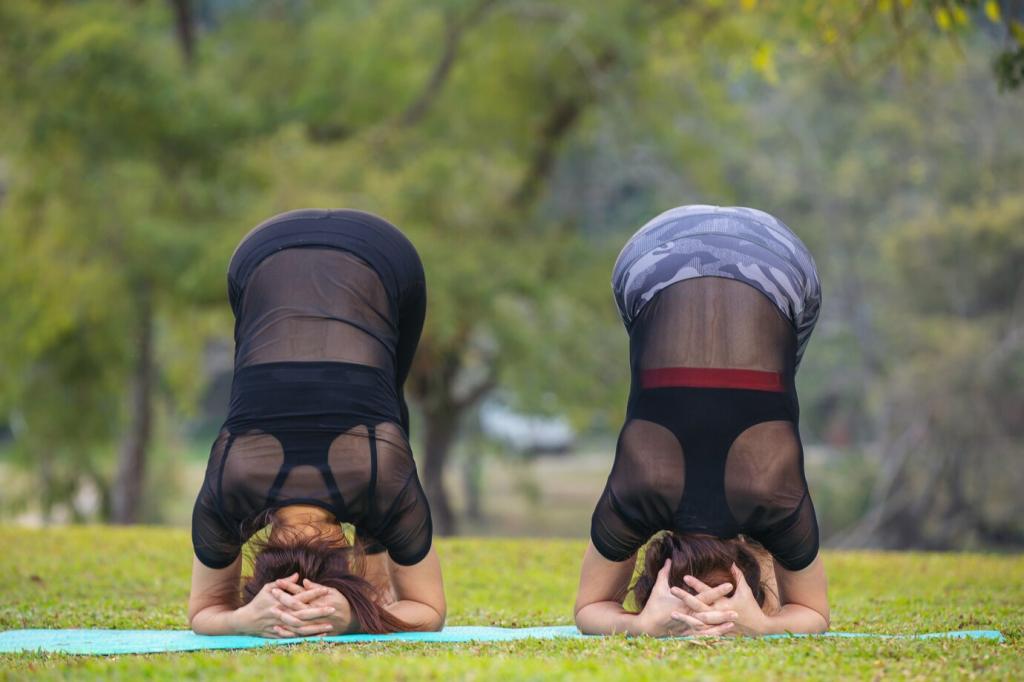
Start Here: Foundations for First-Time Yogis
Breath Before Shape
Let your inhale create length and your exhale soften effort. Try slow nasal breathing, counting four in and four out, so your body settles before moving. Share in the comments whether counting breath helps you calm first-class jitters.
Alignment You Can Feel
Instead of chasing perfect lines, focus on sensations: grounded feet, steady hips, relaxed jaw, and ribs drawing gently in. These signals protect joints and build trust. Ask questions below if any cue feels confusing in your home practice.
Build a Gentle Routine
Consistency beats intensity for beginners. Start with ten minutes, three times a week, repeating the same core poses. Track how you feel afterward and invite a friend to join you. Comment which days fit your life to stay accountable.
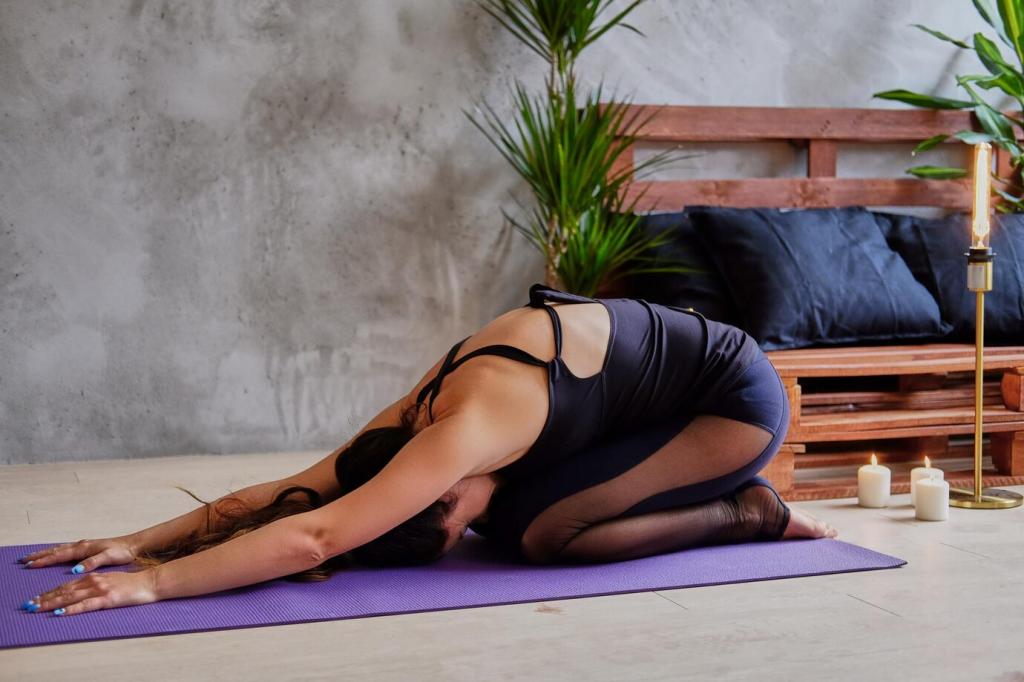
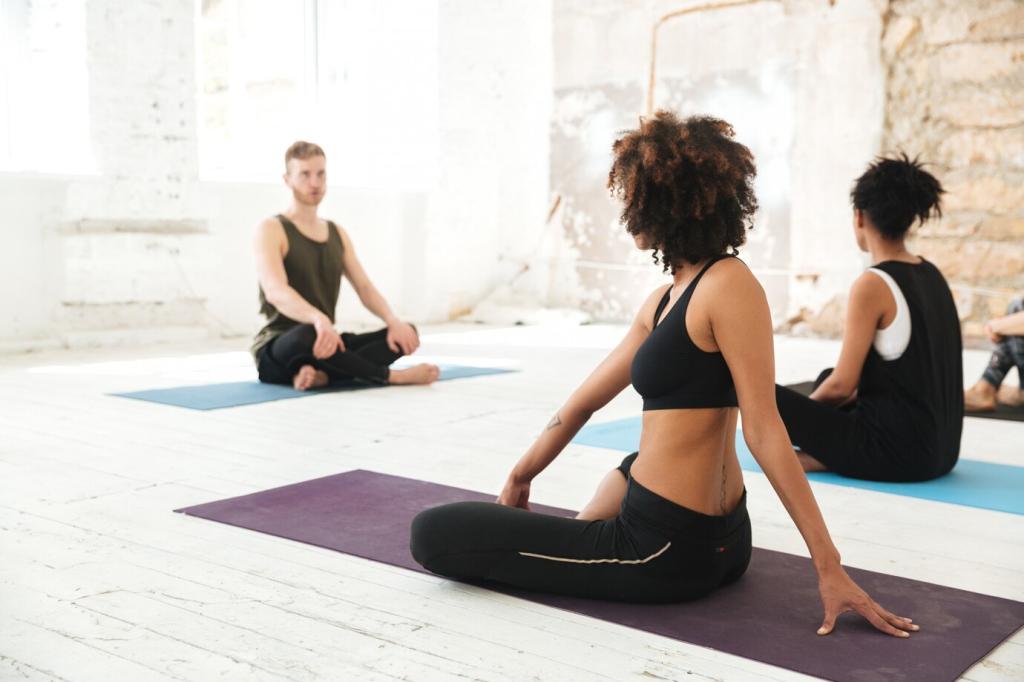
Grounding Poses to Calm Nerves
Stand with feet hip-width, weight evenly across heels and balls, knees soft, crown lifting. Imagine zipping up through your center while shoulders relax. Post a photo of your stance and note one sensation you can reliably find each time.
Grounding Poses to Calm Nerves
Knees wide or together, hips toward heels, forehead resting on a block or folded towel. Breathe into your back ribs and let shoulders melt. Use this refuge anytime. Tell us how many breaths it takes before your jaw unclenches.
Cat–Cow Flow (Marjaryasana–Bitilasana)
On hands and knees, alternate rounding and arching your spine with steady breath. Spread fingers wide, press through palms, and move smoothly. Try five rounds, then pause. Comment which area—neck, mid-back, or hips—felt the biggest release today.
Downward Facing Dog (Adho Mukha Svanasana) Made Accessible
Keep knees bent, lift hips back, and lengthen the spine first. Hands shoulder-width, feet hip-width, heels easy. If wrists protest, use blocks or a wall. Share whether bending knees helped you find more comfort and space through your back.
Low Lunge (Anjaneyasana) for Hip Relief
Step one foot forward, back knee cushioned, and stack front knee over ankle. Lift through the chest while tailbone lengthens. Add blocks for support. Let us know if this pose eases sitting stiffness, and which side feels tighter today.
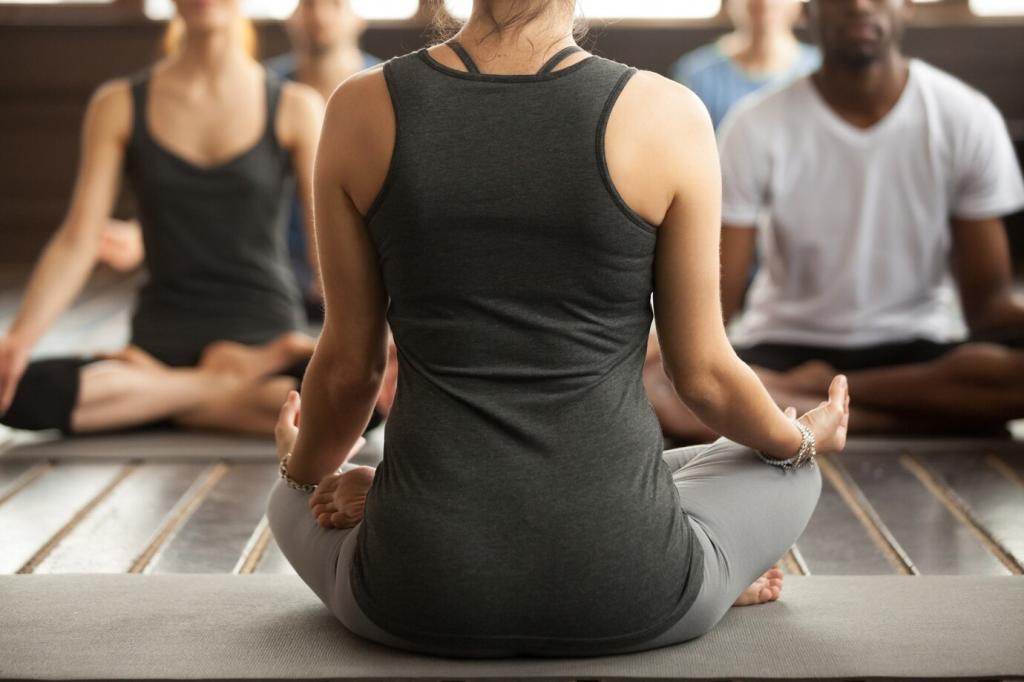
Stand Tall: Warriors and Triangles
Shorten your stance, turn back heel slightly out, and square hips only as far as comfortable. Lift through ribs while shoulders soften. Try five steady breaths. Comment whether reducing stance length made your lower back feel safer and stronger.
Stand Tall: Warriors and Triangles
Front knee tracks over middle toes, back leg strong, arms reaching with ease. Soften the gaze past front fingertips and breathe steadily. Hold for three breaths. Share how focusing on your back foot transformed stability across the entire pose.
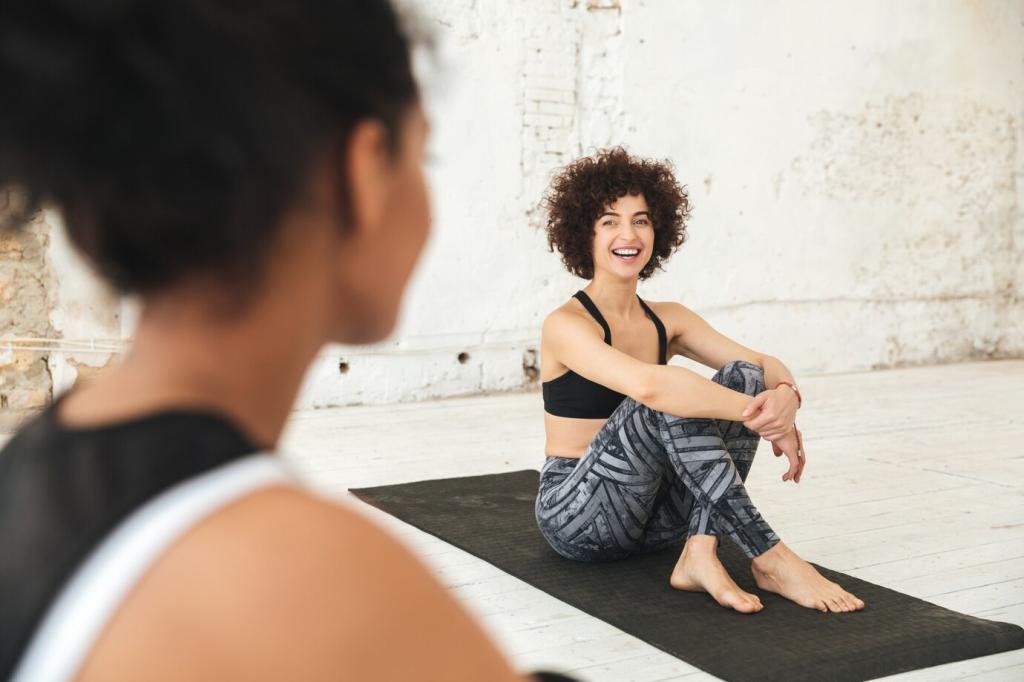
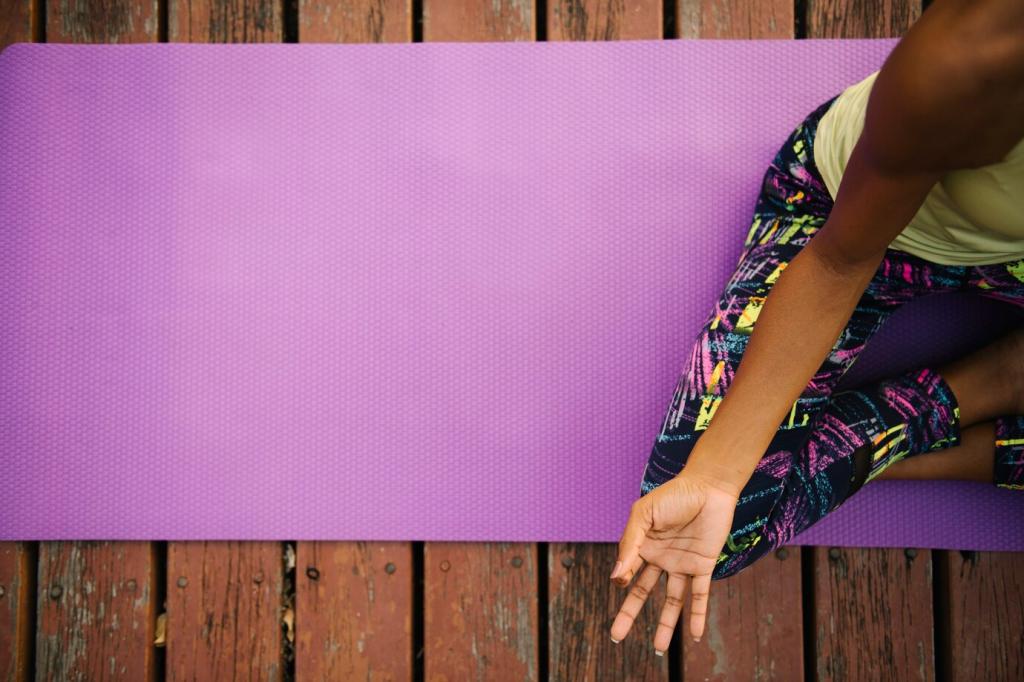
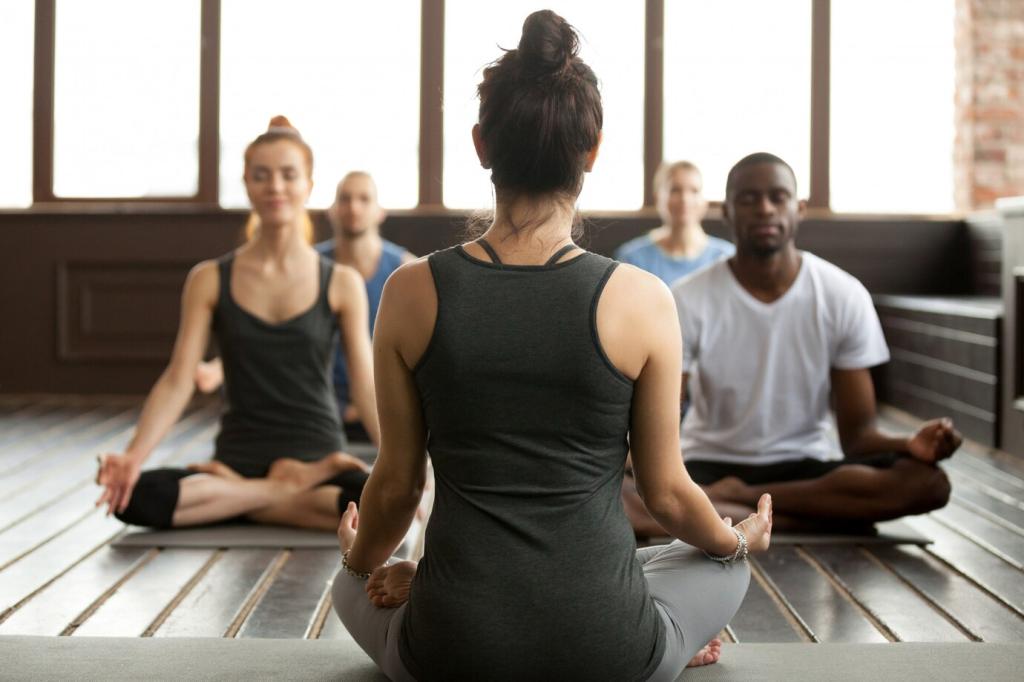
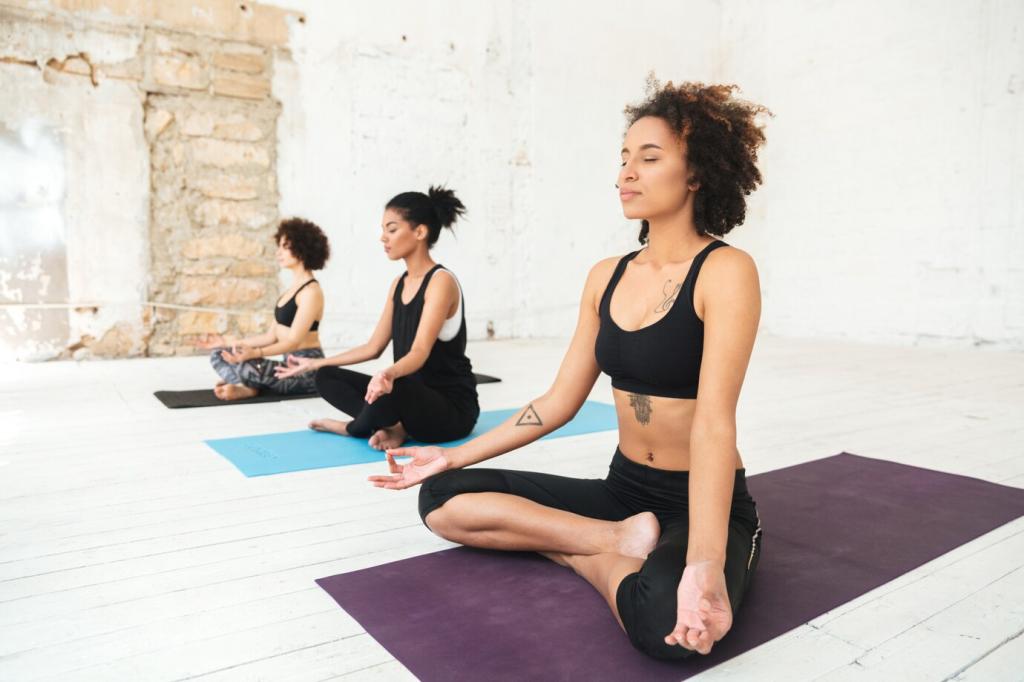
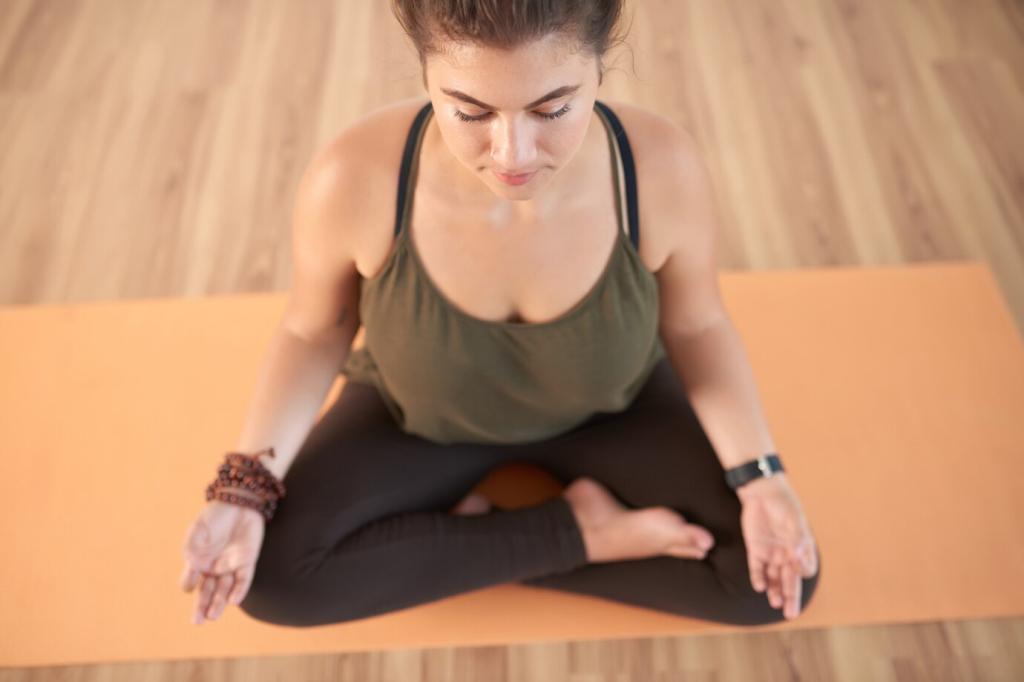
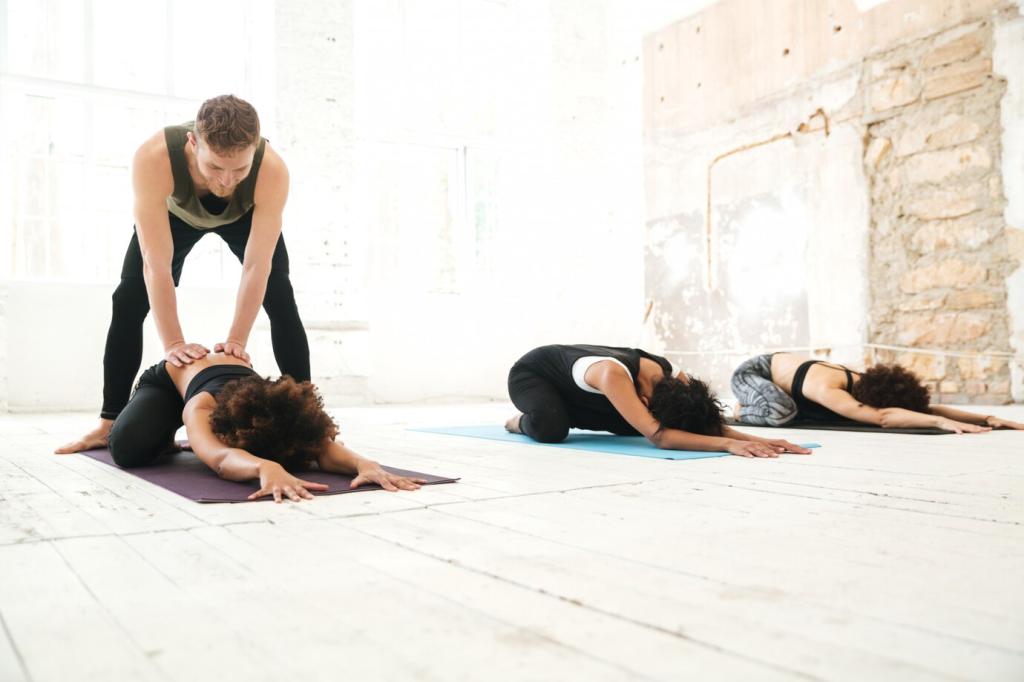
Cool Down and Integrate
Hug knees to chest, then drop them to one side with shoulders heavy on the mat. Breathe into your side ribs for five slow cycles. Share afterward whether your low back feels easier and which side preferred the twist today.
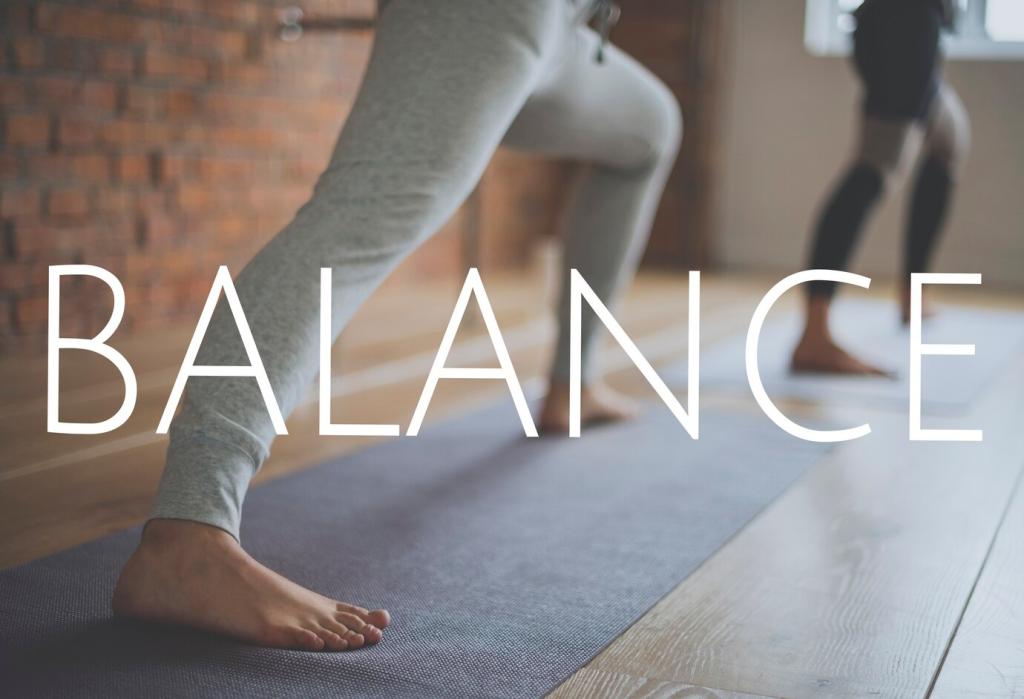
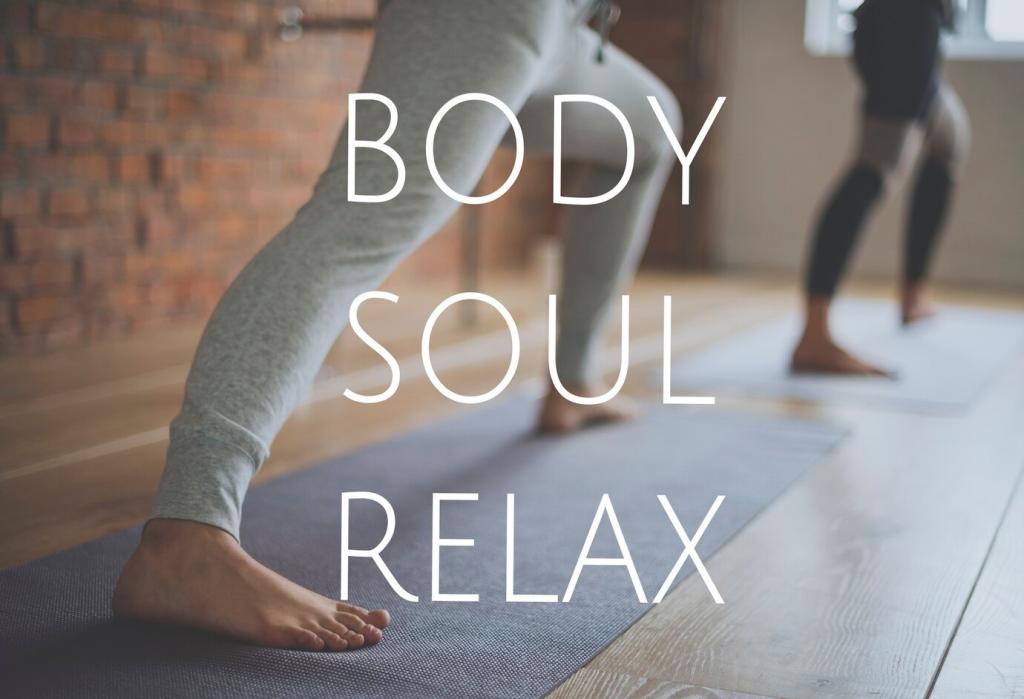
Avoid These Newbie Pitfalls
When effort spikes, breath often disappears. Set a quiet metronome-like count and match movement to inhale or exhale. If you catch breath holding, smile and start again. Share whether counting steadied your transitions and softened neck or jaw tension.
Avoid These Newbie Pitfalls
Hyper-straightening knees or elbows feels stable but strains tissues. Instead, keep a micro-bend and engage surrounding muscles. Notice how balance improves. Comment which cue—micro-bend or muscle activation—helped you feel supported without gripping or collapsing today.
